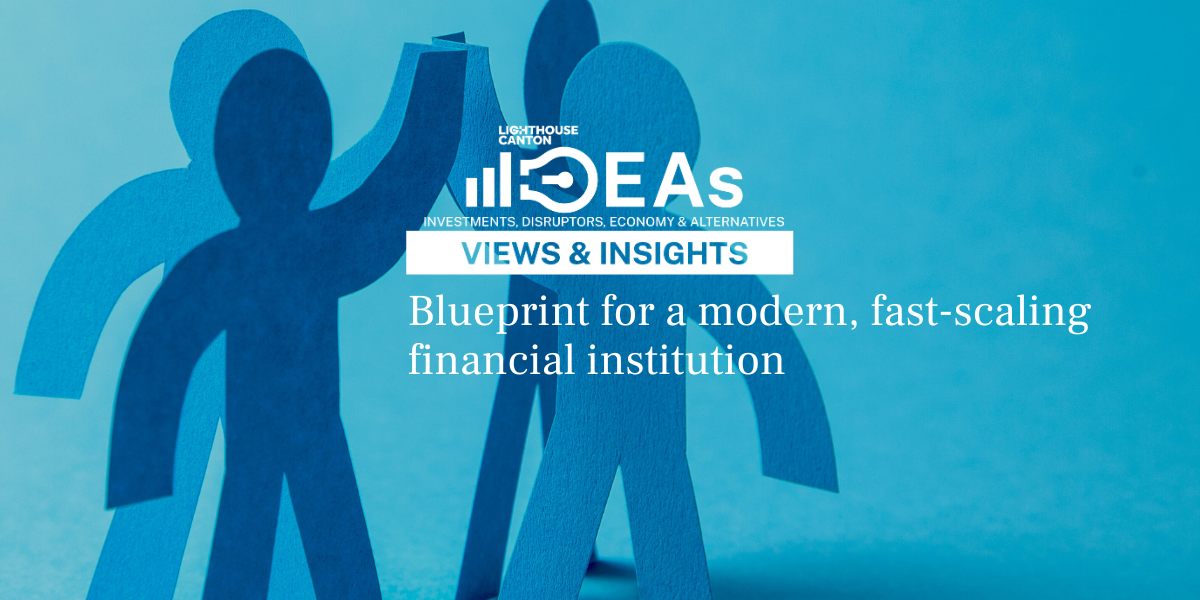In the relentless sprint of artificial intelligence (AI) evolution, yesterday’s revolutionaries can be today’s after thoughts. The breath-taking pace of innovation is rapidly becoming more apparent, making it challenging to predict long-term market leaders. As such traditional investment wisdom, hinged on forecasting and long-term bets, falters dramatically.
The potentials for GenAI
Much like the divergent beliefs in financial markets, GenAI harbors distinct belief schools that shape perspectives on its development and potential.
Mirroring the three versions of the theory, the Weak Believers, argue that the hype surrounding GenAI has inflated its perceived value beyond its intrinsic worth. They view GenAI as a mere statistical parrot, reassembling existing ideas without genuine creativity.
The Semi-Strong Believers posit that GenAI's capabilities are already reflected in its market value. Focusing mostly on the practical value of GenAI, using it for tasks like drafting emails, preparing sales pitches, or summarizing podcasts, these believers have little time to theorize on its mechanics or other actual or potential use cases in exotic fields.
While the Strong Believers contend that GenAI's true potential lies in its ability to process vast amounts of data, driving innovation and transformation across industries. It is their belief that GenAI can create novel solutions, addressing complex scientific challenges beyond human capabilities.
With most falling within the last two schools of thought, there is nothing so far to doubt GenAI’s phenomenal long-term theme and its role in turbocharging innovation in various fields.
The Super Moore Era
The pace at which AI is evolving is nothing short of breath-taking and we are in the realms that make Moore’s law appear tame. Take for example when ChatGPT entered the scene a year and half ago. Back then it had the capacity to digest a mere 2000 to 4000 tokens, in layman’s terms, about a 700-word prompt. Just last month, Google’s Gemini Pro 1.5boasted the ability to process inputs equivalent to ten full-length novels—a thousand fold increase.
From Open AI’s Sora churning out realistic videos up to sixty seconds from mere text prompts; to Nvidia’s AI chatbot that can run locally on PCs with RTX graphics card, allowing users to personalize a free chatbot with their own content; through to the expected Apple AI announcements in iOS18.
Innovations will no doubt be one of the most positive macro drivers in the years ahead. It will materially widen the gap between its leaders and those who fail; and we have come to witness this first hand over the last few quarters. The critical thing to recognize, however, is that the next generation of winners will have to observe their backs constantly and new winners will keep emerging from various corners all the time. With the market fixated on rudimentary chatbox and co-pilot applications the attention must shift from the creations to the use cases.
A Shift Downstream
If anything, history has taught us when it comes to the realm of innovation and technology that thematic diversification in innovation and valuation focus will help when markets calm. For example, drawing parallels from the early days of the internet to the current landscape of AI investments, the focus will shift from upstream creators and more towards downstream applications and the innovation it has to offer.
If we look at the semiconductor industry, investments were initially heavily focused on infrastructure and key players like Cisco. Similarly, we now see a heavy emphasis on GPU manufacturers and semiconductor companies in AI. Mirroring the bubble stages of the ’90s,cyclical sector analysts have again reduced a new technology to investment in commoditized upstream picks and shovel plays like wafer bonders, packagers, and IC design-makers.
If we move a little more downstream, we can also compare LLM makers to the likes of search engines, mobile phones, or social media providers. Open AI’s paid subscriber growth has likely decelerated to fairly normal levels despite a bevy of new features. The numbers are likely so weak that one does not even hear whispers of staggering revenues anywhere in the LLM space. Microsoft’s co-pilot announcements make headlines, but there are few shout outs from new users. Bing’s inability to take even a tiny market share from Google exemplifies the inability to surpass early adopters in current forms. Anything that can be created with such little effort can most certainly be copied and trumped with little effort, regardless of valuations ascribed to them by enthusiasts and the money raised.
Finding The Next Wave of Innovation
We have yet to see where the GenAI revolution will take us. As we stand on the cusp of the next generation of AI, the trajectory of innovation points toward even greater strides. The current wave of innovation and hints of a Super Moore era ahead serves as a prelude to the next phase, where investors will find even greater value.
The attendant high and rising unpredictability also demands a more nuanced approach for good risk-adjusted returns. A sensible, well-designed approach based on evidence, observation, and monitoring of big themes is more needed given the likely stages of excessive valuations and subsequent busts in both public and private markets in the years ahead.
This article is contributed by Nilesh Jasani, Advisory Board Member, Lighthouse Canton and Portfolio Manager for LC GenInnov Global Innovation Fund.
- Read more on Nilesh's views on GenAI here
- Find out more about our investment strategy - Global Innovation
- Find out more about the LC GenInnov Global Innovation Fund













%20(14).jpg)
%20(4).png)
.png)
%20(2).png)
